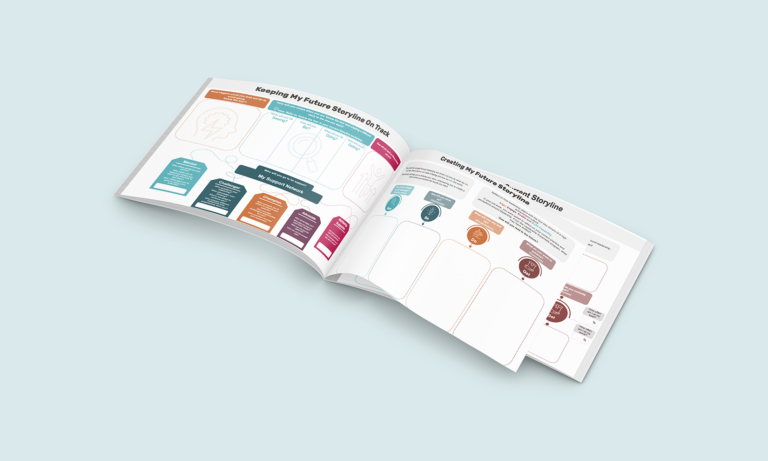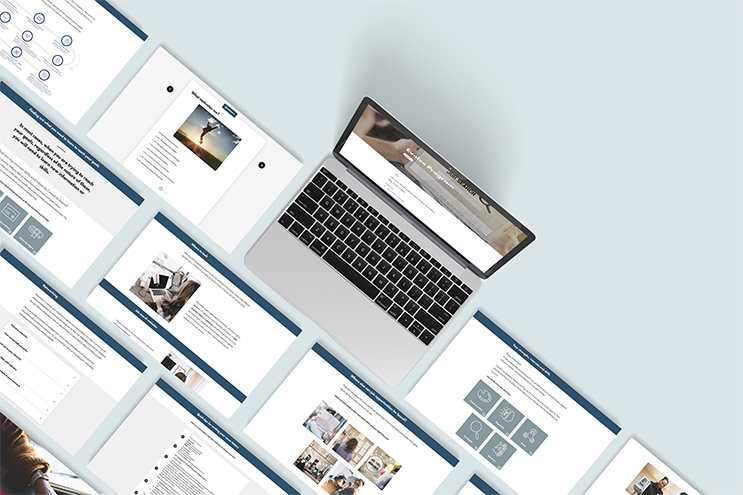By Bianca Schimizzi
Director & Lead Instructional Designer | Hungry Minds
Introduction: Why this guide exists
Thinking about a career in instructional design? Smart move. The industry is growing fast—and the demand for people who can design great learning is on the rise too.
But I won’t beat around the bush: finding your footing can feel overwhelming. There’s no obvious path in. The job ads are full of buzzwords. And most “instructional design courses” leave you with a certificate… but not much else.
That’s where this guide comes in.
Whether you’re:
A teacher ready to pivot into learning design
A consultant or L&D specialist looking to sharpen your skills
You’ve dabbled in design but want to get your skills recognised and certified
This is your straight-talking, experience-backed guide to what instructional design actually involves—and how to build the skills that matter.
What you’ll find in this guide
What instructional design really means (and why it’s not what you think)
Why so many instructional design courses miss the mark
The skills that actually matter in instructional design
What to look for in a great instructional design course
How we built the Professional Certificate at Hungry Minds
Inside the job: How instructional designers spend their time
Building capability at scale (for teams and organisations)
Final thoughts: Instructional design is evolving. Are you?
If you’re ready to make the leap (or at least start planning it), this guide will help you move forward with confidence.
Let’s get into it.
What instructional design really means (and why it’s not what you think)
If you hear “instructional design” and think of PowerPoints and click-to-continue eLearning, you’re not alone. A lot of people assume it’s just about digitising content—or repackaging information with nicer fonts.
But real instructional design is about helping people do something better.
It’s strategic. Practical. And when it’s done right, it’s quietly powerful. The kind of work that changes behaviours and builds confidence. Not only that, it makes teams sharper, faster, and more connected.
Here are the basics of instructional design:
Analysing problems to figure out what’s actually getting in people’s way
Designing learning experiences that are clear, engaging, and relevant
Creating tools and programs that help people practise, apply, and improve
Collaborating with stakeholders to align learning with business goals
Evaluating impact so the learning doesn’t just land—it lasts
Yes, there are frameworks involved (ADDIE is our ride-or-die). And yes, you’ll work with tools like Rise, Adobe, or Miro. But tools are just the packaging. The real skill is in knowing how to design learning that lands.
A quick example
CHIA Vic came to us with solid learning programs—but they wanted more than content. They wanted capability.
First, we reviewed their courses, redesigning them for clarity and engagement. Then we delivered a tailored instructional design course their team could actually use. Now, they’re designing programs in-house with confidence—and getting better results across the board.
Instructional Design IRL: How CHIA Vic built better learning to serve Victorians who need housing
This isn’t about jazzing up a slideshow. It’s about creating learning that lands—and that’s the real skill.
Why so many instructional design courses miss the mark
Let’s be honest. A lot of instructional design courses aren’t built for the real world.
Some are tool tutorials—focused on getting you from login to publish in Rise or Storyline, but with zero clarity on when (or why) you’d use them.
Others go deep on learning theory, but leave you wondering how that translates into an actual project. And some are so passive you could complete them half-asleep.
No coaching. No community. No portfolio.
If you’ve taken a course and still thought, “Cool, but how do I actually do this job?”—you’re not alone.
What’s missing? Context. Feedback. Strategy. Something real to show for your effort.
Take Laura for example. She was an experienced teacher who’d been dabbling in design through her school’s LMS—and loved it! But when she took a basic online course, it fell short. Laura just got a pile of theory, no feedback, and no idea how to showcase her skills.
Here’s what to look for in an instructional design course:
Hands-on projects you can actually use in a portfolio
Feedback from real designers (not auto-graded quizzes)
Templates and tools that save you hours—not just theory dumps
A clear connection between what you’re learning and the jobs you’re aiming for
Choose a course that helps you do the work—not just learn about it.
After completing a proper ID course (which included coaching sessions with an industry pro), Laura was sorted. Now she’s built a solid portfolio, mapped her transferable skills to the ID process, and could confidently apply for L&D roles.
If you’re choosing an instructional design course, choose one that builds capability, not just knowledge. It should give you the tools, support, and space to do the work—not just learn about it.
Coming up next: The six real-world skills every instructional designer needs to thrive.

The skills that actually matter in instructional design
Instructional design portfolios don’t happen by accident. Here’s a list of the skills that’ll get yours noticed.
Learning analysis
Good learning design starts with good questions. That means digging beneath the surface to understand what’s really going on.
Sometimes it’s a knowledge gap. Sometimes it’s a culture clash. Sometimes it’s not a learning problem at all.
Instructional designers know how to investigate, map the gap, and recommend the right solution—learning or otherwise.
Learning science
Designing sticky learning isn’t guesswork—it’s art and science. Great IDs draw on principles like cognitive load theory, the forgetting curve, and spaced repetition to make sure learning sticks.
We scaffold knowledge. We work to reduce overwhelm. And we design learning that’s relevant, repeatable, and easy to apply.
Instructional design IRL: How Autism CRC gave teachers the tools to support neurodivergent learners.
Learn how we turned robust Autism research into teacher-friendly eLearning—accessible, engaging, and backed by learning science that works.
Design thinking and models
ADDIE, First Principles, experiential learning—they’re tools, not rules. Great instructional designers know how (and when) to use them. They build structure where it’s needed. And they flex the process when it’s not.
It’s about designing learning that’s purposeful, responsive, and ready to evolve.
Tool fluency
Tools like Rise 360, Storyline and Miro are part of the job—but they’re not everything.
The best instructional designers know why they’re using a given tool. And how to get the most out of tools without overengineering the learning.
Remember: Form follows function.
Portfolio and personal brand
A polished portfolio looks nice. A strategic one gets you hired.
Your work should show more than clean slides—it should tell the story behind the design.
What was the challenge?
What decisions did you make?
What changed for the learner?
That’s what hiring managers want to see: how you think, how you solve, and how you make learning work in the real world.
Stakeholder skills
Instructional design is collaborative. You’re working with subject matter experts, project sponsors, and end users.
It’s the ID’s job to ask the right questions. Translate strategic goals into learner outcomes. Navigate feedback like a pro. And keep the project moving without losing sight of what the learning needs to achieve.
It’s part facilitator, part detective, part diplomat.
Up next: What to look for in an instructional design course that’s actually worth your time (and your money).

How to spot an instructional design course that’s actually worth your time
Not all courses are created equal. Some are slick on the surface but hollow underneath. Others bury you in theory and hope you find your way out. And far too many promise “job readiness” with no support, no feedback, and no idea what the job actually involves.
Here’s what a genuinely useful instructional design course should give you—especially if you’re changing careers or levelling up your skills.
Real-world projects
If you’re not building something, you’re not learning. Look for a course that lets you work on real scenarios, not just passive content. Bonus points if your project becomes part of your portfolio.
Feedback and coaching
Self-paced is fine. Self-guided? Not so much. You need someone who’s done the job to look at your work, challenge your thinking, and help you avoid rookie mistakes.
Tools and templates
Templates aren’t shortcuts—they’re scaffolding. A good course should hand over the tools that working designers actually use to plan, design, and iterate.
Something to show for it
Microcredentials. Digital badges. A polished project. Whatever the format, you want tangible proof of what you’ve learned—something that speaks to hiring managers, not just your inbox.
A community that lasts
You’re not meant to do this solo. The best courses connect you with other designers—people who’ll give feedback, share ideas, and maybe one day, send work your way.
Perhaps most importantly: Make sure the course actually reflects the kind of work you want to do. If the examples are stuck in rigid corporate jargon—immediately no. Look for a course that explicitly teaches creative, strategic, human-centered learning.
Up next: A look behind the curtain—how we built the Professional Certificate at Hungry Minds (and why we had to).

How we built the Professional Certificate of Instructional Design (and why we had to)
Our Professional Certificate in Instructional Design isn’t like *other* professional courses. We built this one because we were tired of seeing smart, capable people let down by training that didn’t deliver.
I’m sure you know the ones. Courses that:
Throw people into tools without context or personalised coaching
Drop dense theory with no way to apply it
Claimed “industry-ready” but didn’t include a single project
We were acutely aware of what was missing. So we created the kind of course we wish we’d had when we were starting out: hands-on, grounded in learning science, and built around actual job skills.
Here’s what we packed in.
A portfolio project from the jump
This isn’t a stare at these slides and hope for the best situation. You’ll be working on a project that mirrors what real clients and employers ask for. And you’ll get feedback from senior IDs as you go.
3x one-to-one coaching sessions
You’ll work one-on-one with a senior instructional designer—someone who spends most of their time designing engaging, powerful learning. We’ll challenge your thinking, answer your questions, and hone your design skills.
Tools, templates, and workflows
We don’t expect you to start from scratch. You’ll get access to the exact tools we use on client projects—so you can stop guessing and start designing.
Four stackable microcredentials
Each part of the course is designed to help you master a core skill area—and show that you have. You’ll finish with four digital badges and a certificate that actually means something.
Four stackable microcredentials
Our alumni network (led by our own Hungry Minds team) is full of thinkers, doers, and career changers who’ve walked the same path—and who are happy to share what they’ve learned.
Instructional design IRL: Meet the team behind the course
Every coach in the program is an experienced ID with real projects under their belt. You’re learning from people who do this work every day.
Inside the job: How instructional designers spend their time
Think instructional design is just writing learning objectives and adding voiceover to a PowerPoint? Not quite.
Great IDs follow a clear process—and ours happens to start in the kitchen. If you’ve seen our take on ADDIE, you’ll know the drill:

ANALYSE
The Appetiser
Identify key learning priorities to deliver everything you need—and nothing you don’t.
No filler, no fluff.

DESIGN
The Recipe
Clarify scope, resources, and learning strategies, with decision makers up front.
No surprises in your kitchen!

DEVELOP
Made To Order
We build engaging, interactive learning experiences— aligned to your goals.
Co-designed, iterated and perfected.

IMPLEMENT
Presentation
Prepare the client for a seamless roll-out in face-to-face, virtual, or blended environments.
Get pilot-ready and go -for -launch.

EVALUATE
Taste + Tweak
Review against learning outcomes —find out what to start, stop, and keep.
Identify changes for lasting impact.
Here’s how a typical day might look:
The appetiser: scope the problem
Start your day with a discovery session, chatting with stakeholders, or reviewing data. This is where you dig for what’s really going on—not just what someone thinks they need a course on.
You’re asking:
What’s the performance gap?
What’s the context for the learner?
Is learning even the right solution?
The recipe: design the experience
This is where the magic starts. You’re mapping out the learning experience:
Writing outcomes
Planning practice activities
Choosing the right mix of formats
You’re creatively pulling in learning science, strategy, and empathy—and designing something people will actually want to complete.


